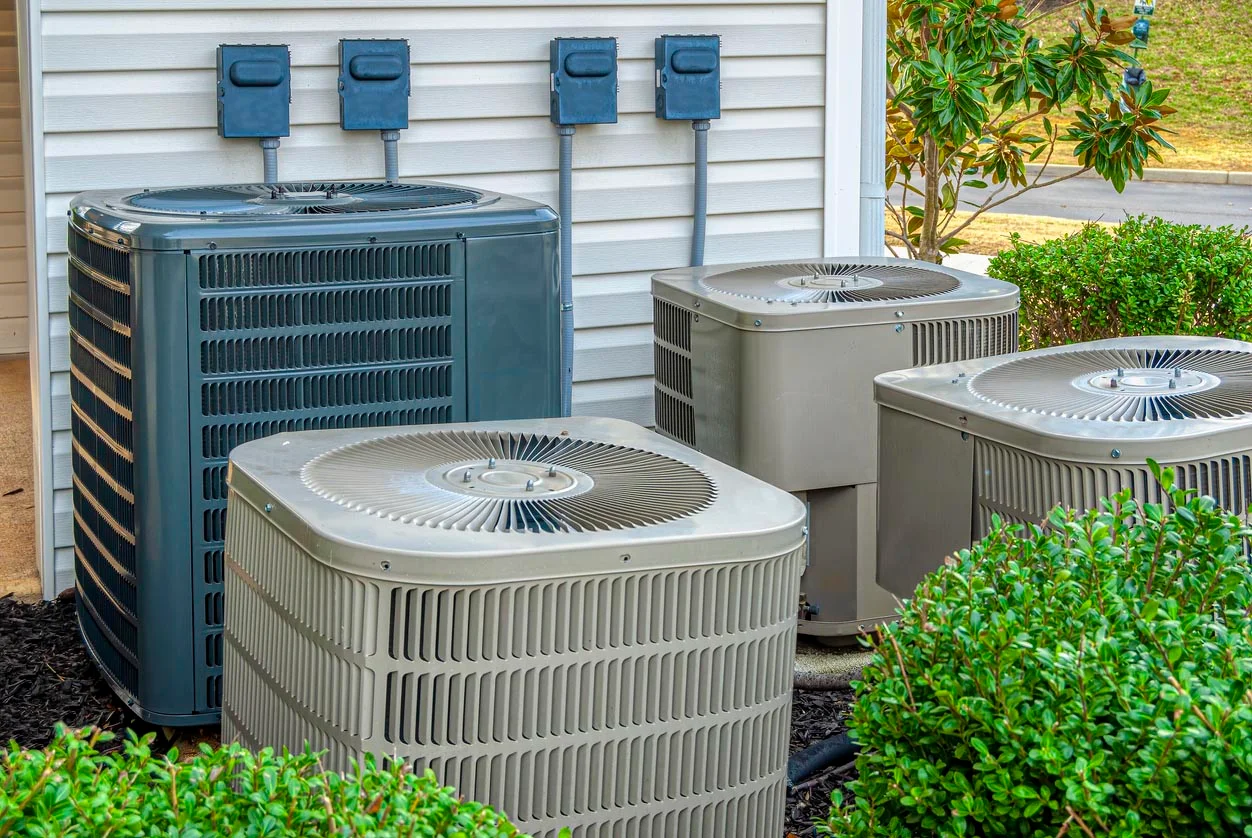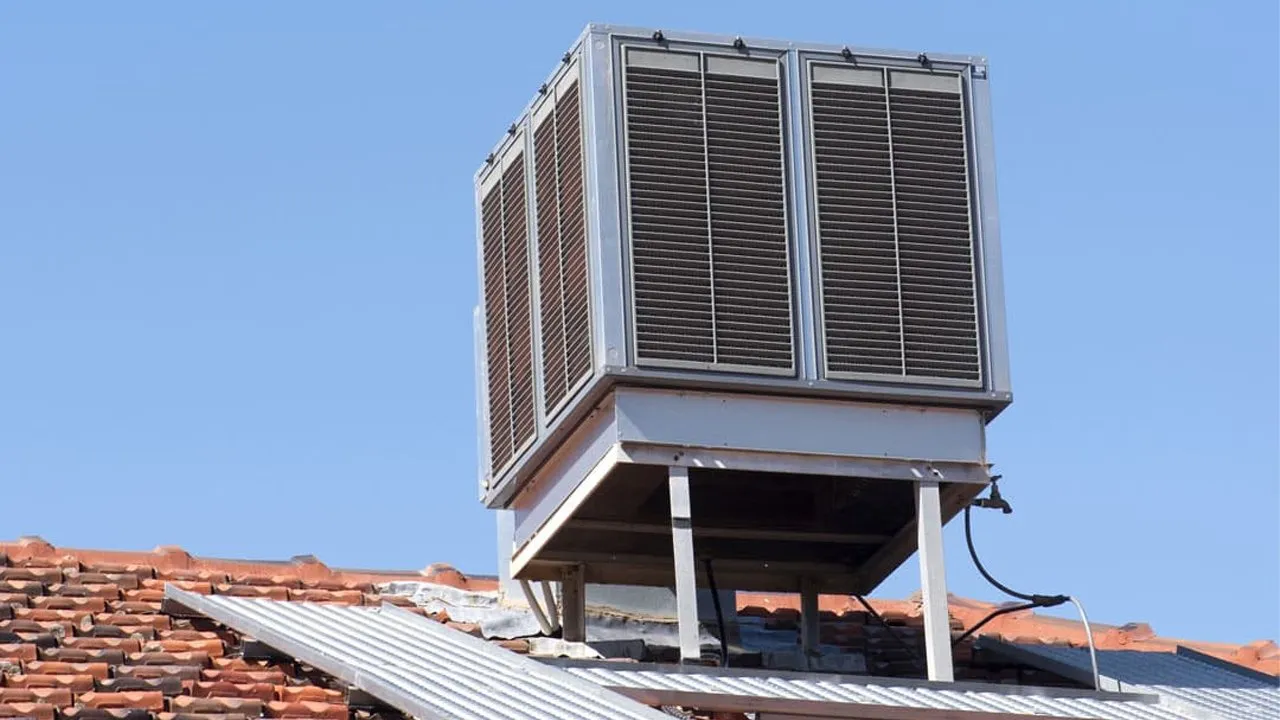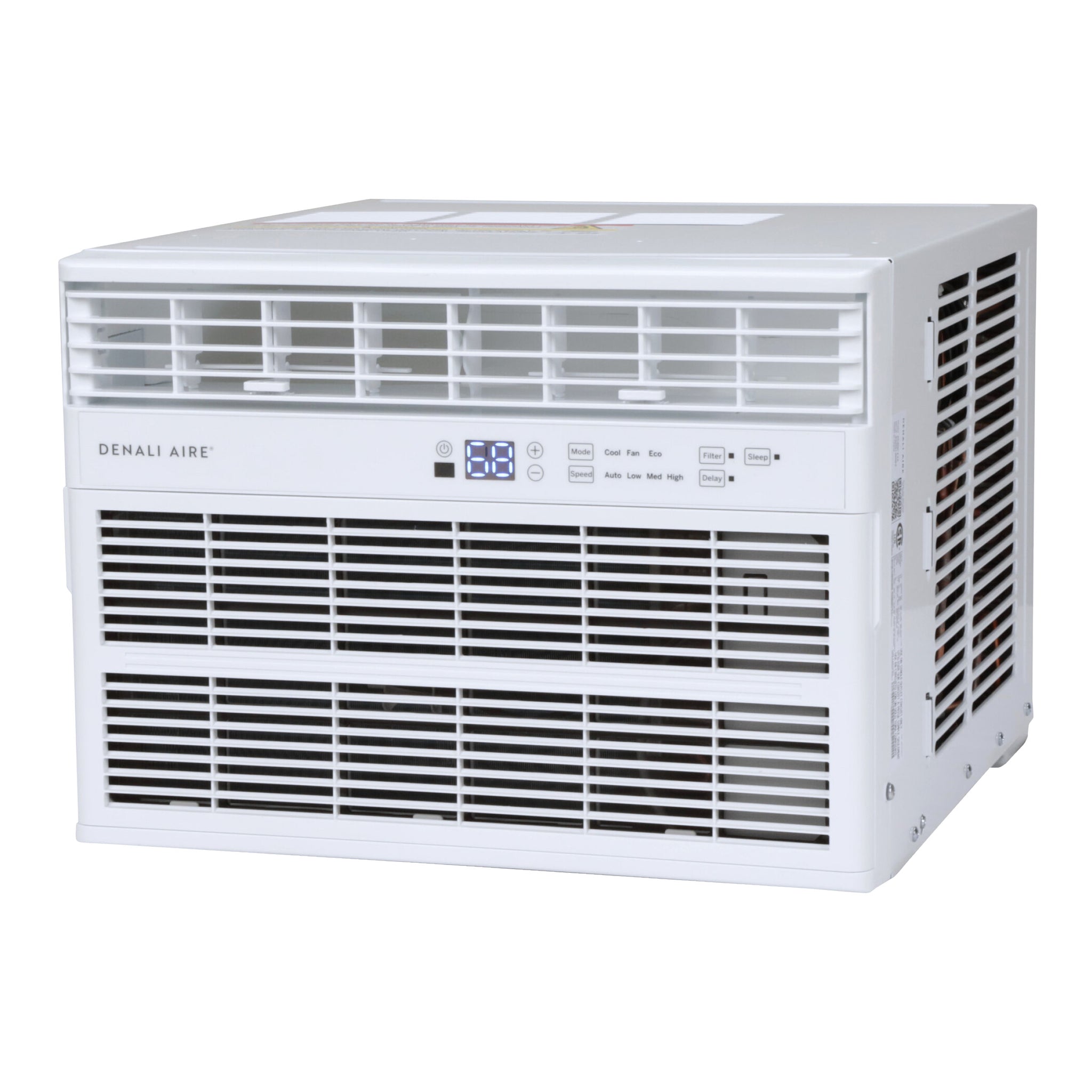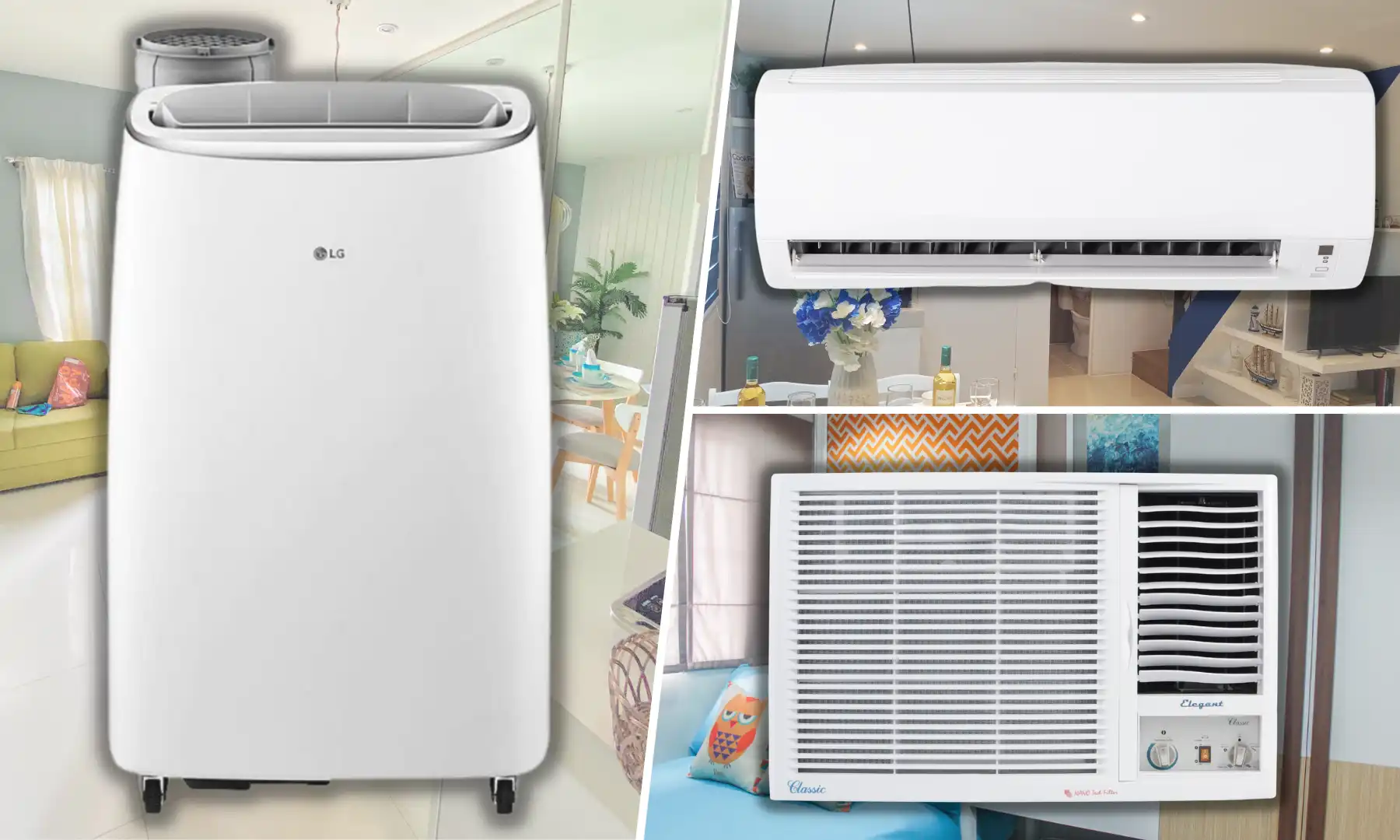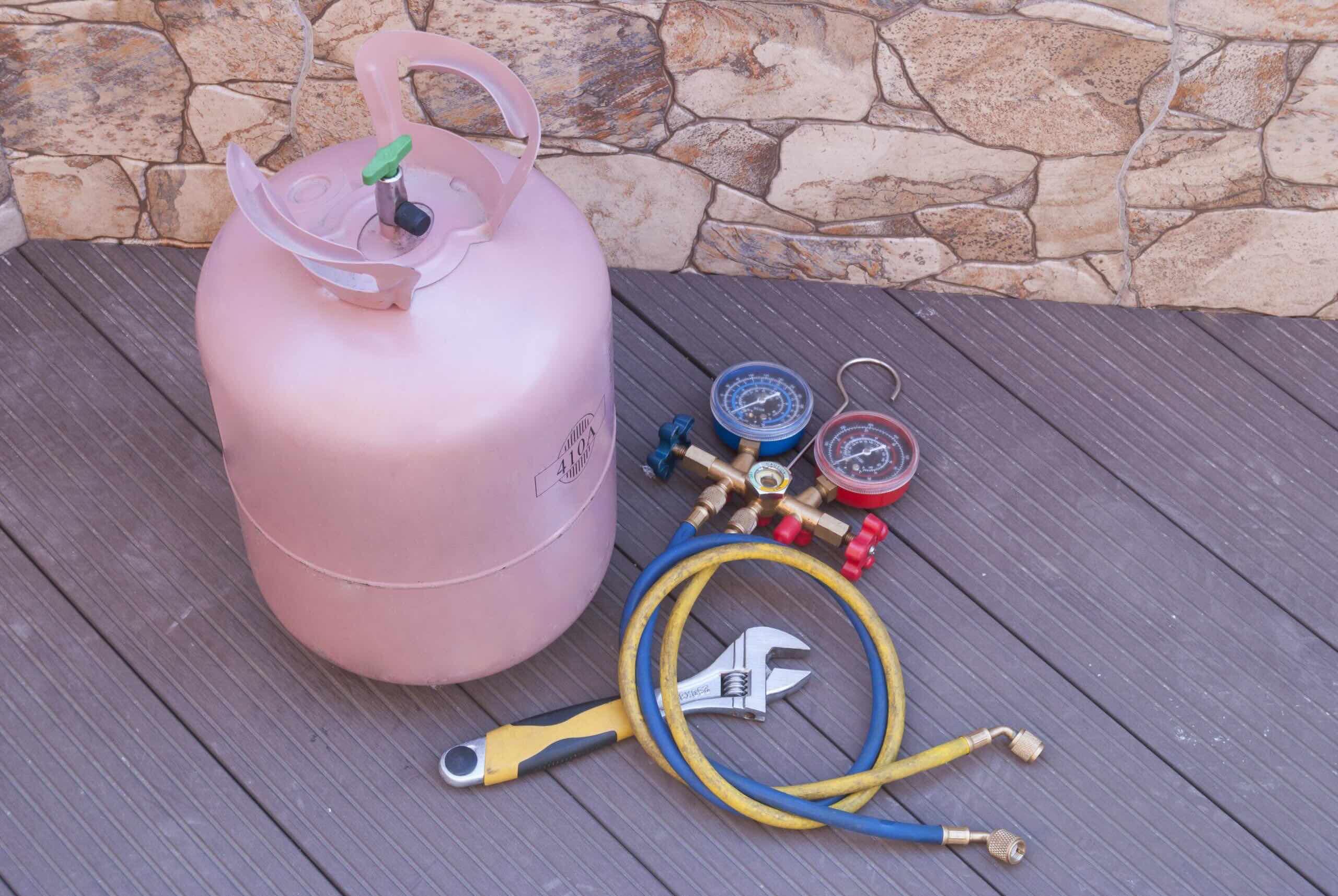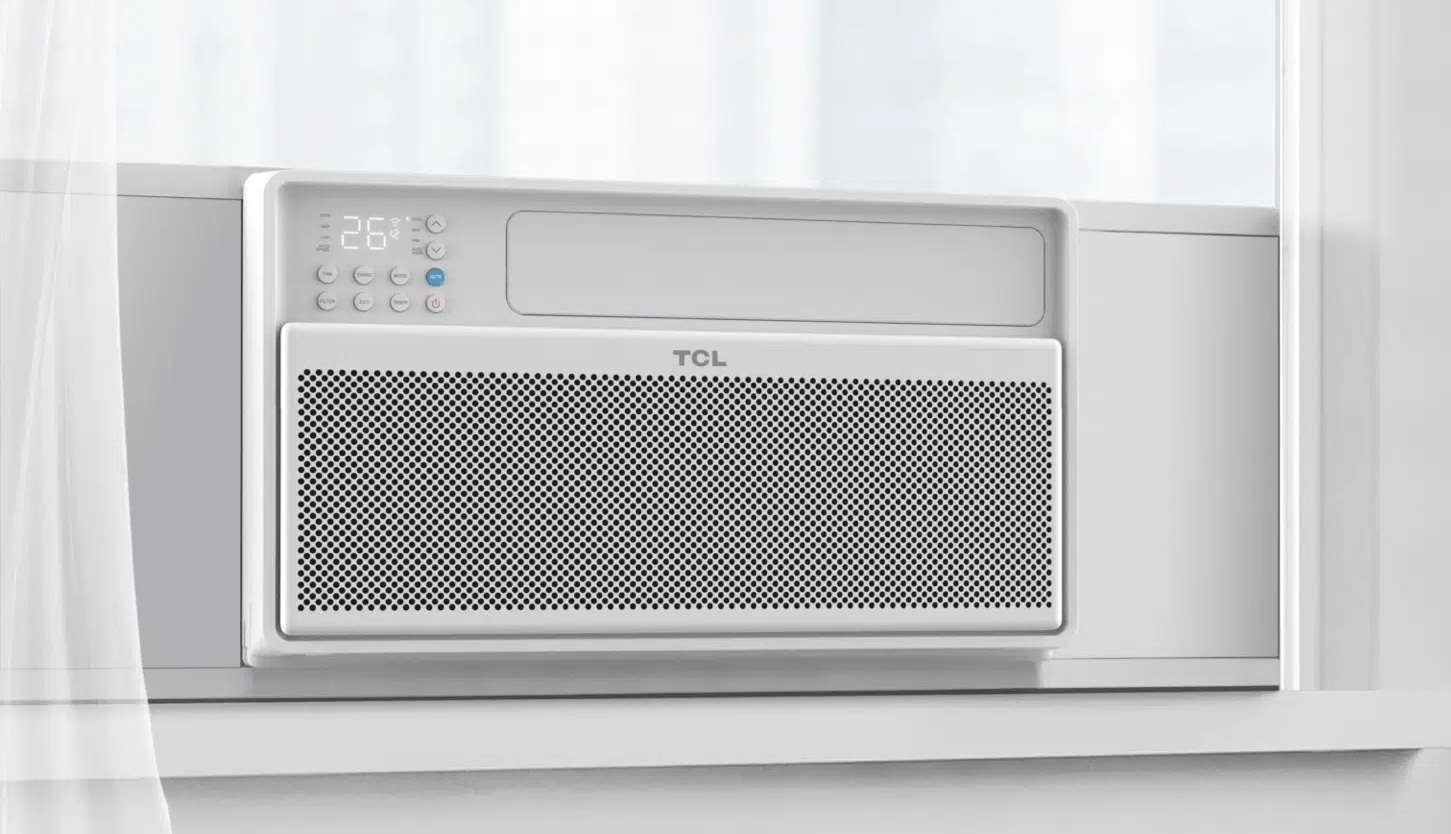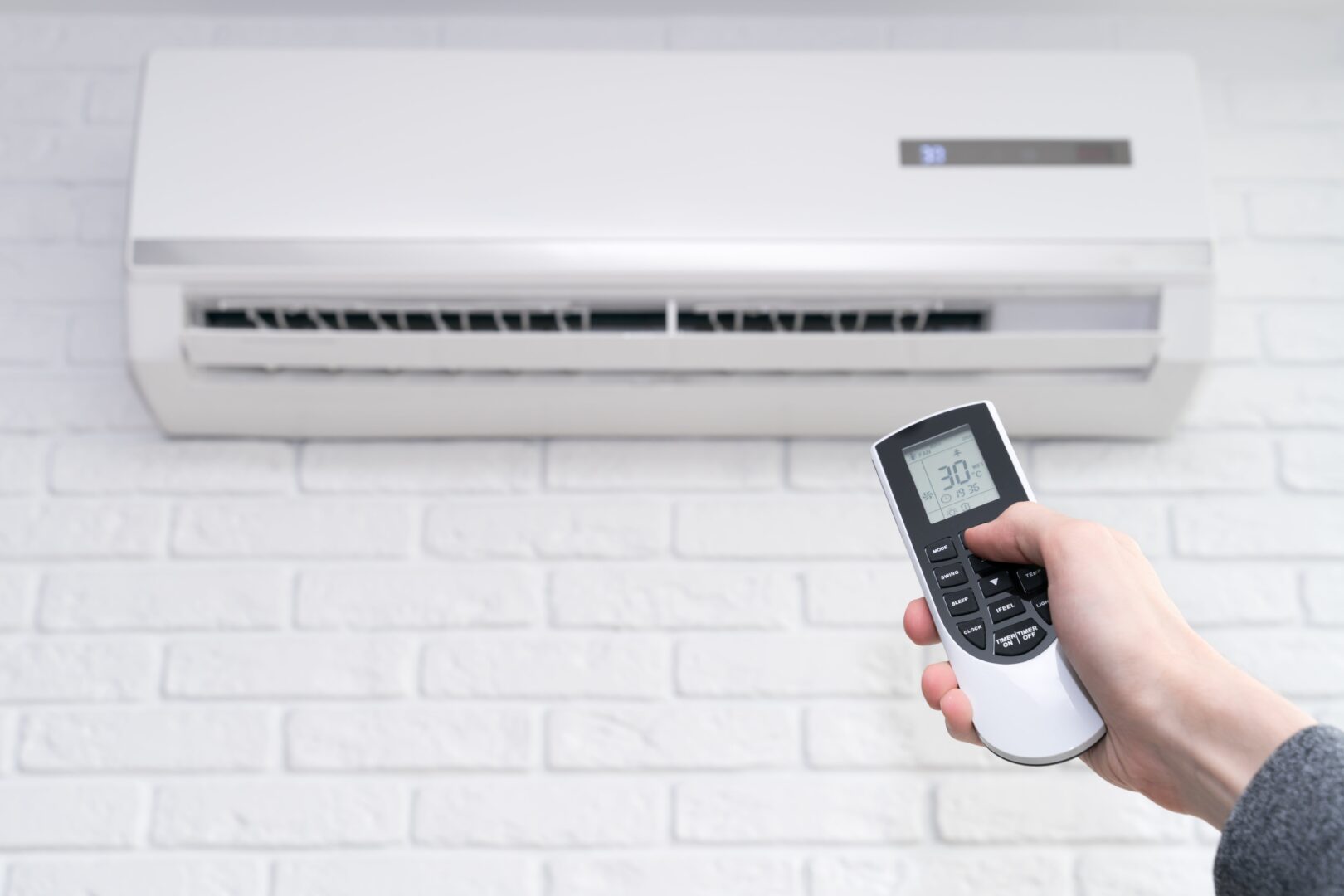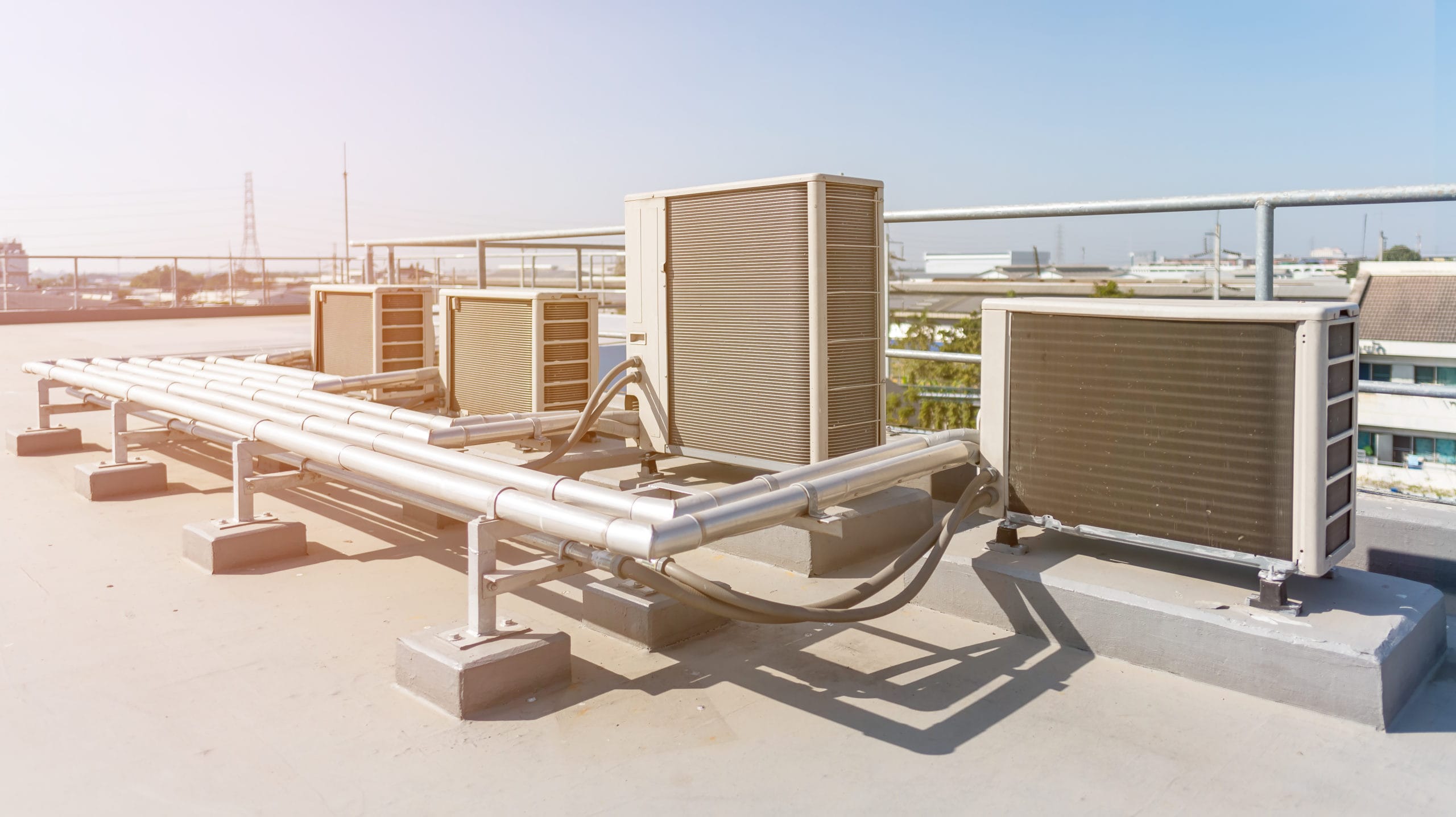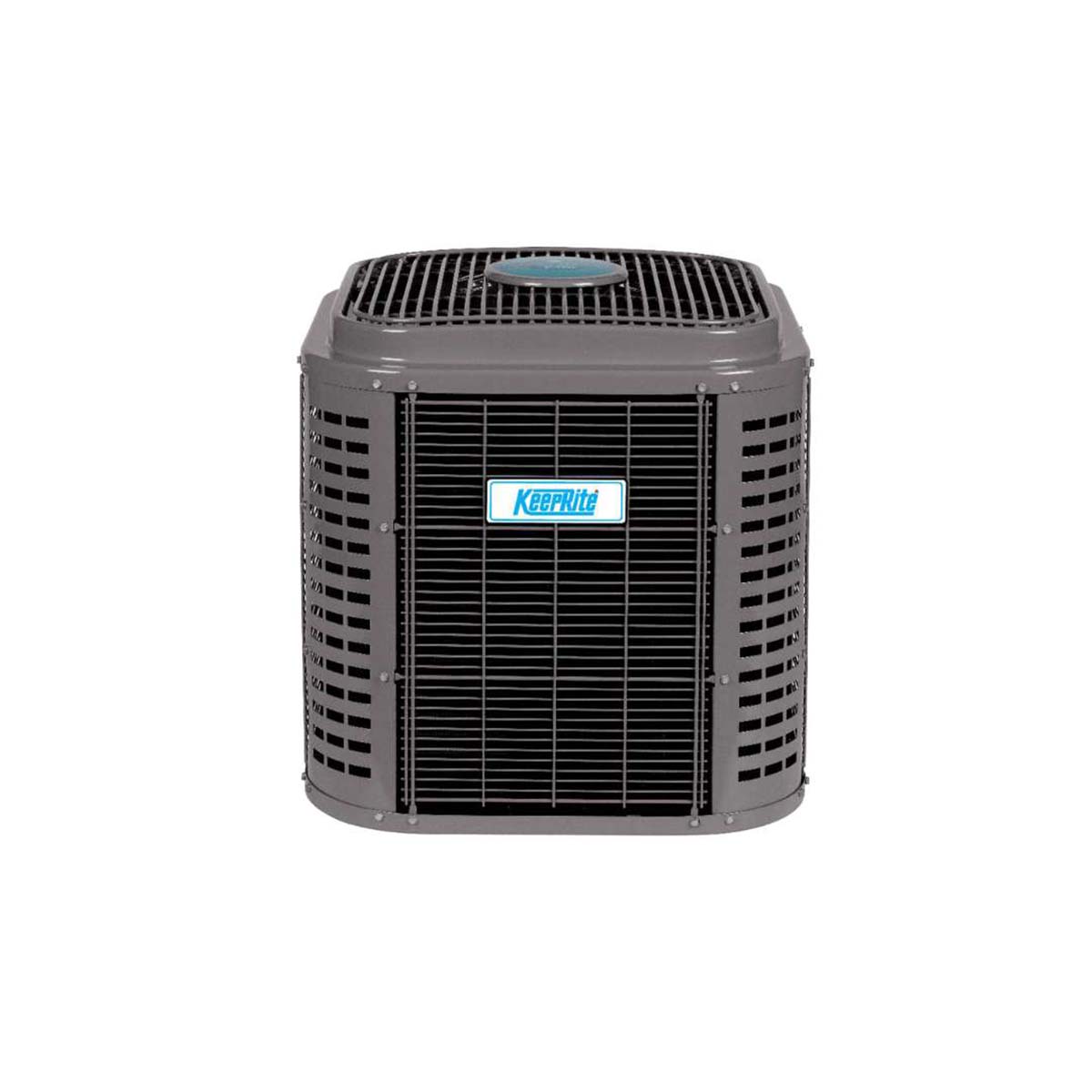Home>Home Maintenance>What Is Air Conditioner Refrigerant
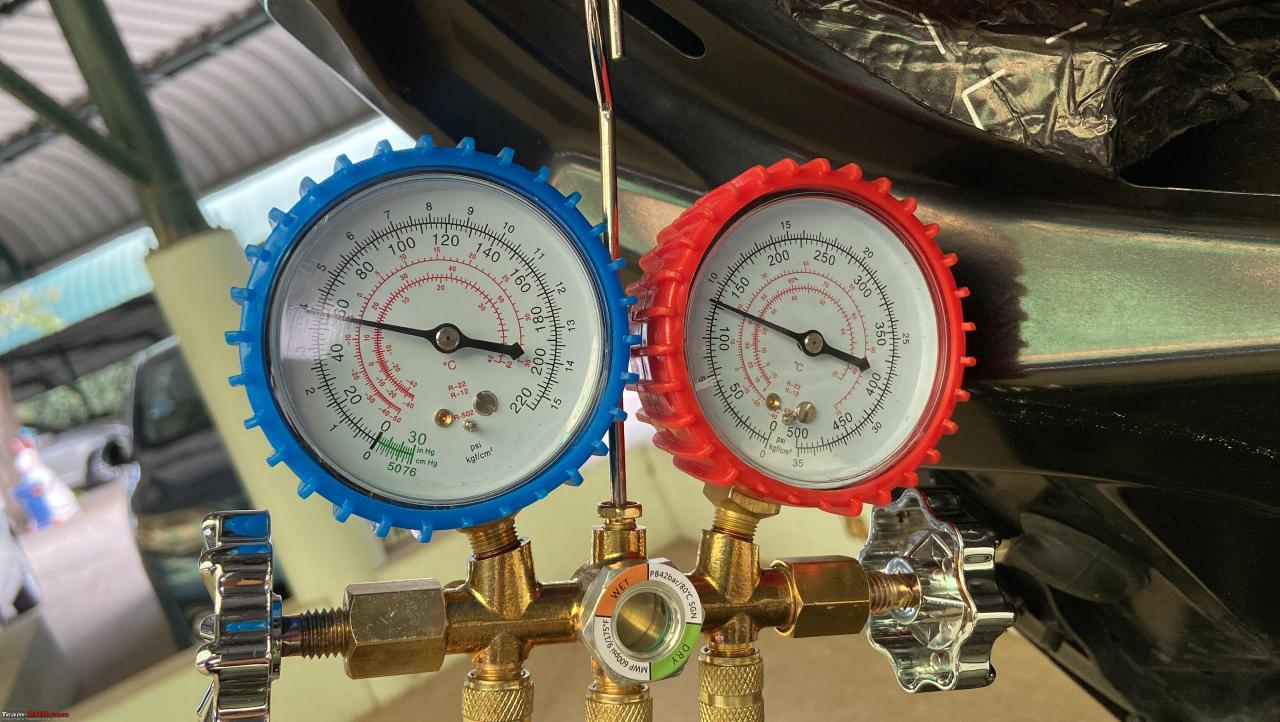

Home Maintenance
What Is Air Conditioner Refrigerant
Modified: March 7, 2024
Discover what air conditioner refrigerant is and why it is essential for efficient cooling in your home. Get expert insights on home maintenance and optimize your AC performance.
(Many of the links in this article redirect to a specific reviewed product. Your purchase of these products through affiliate links helps to generate commission for Storables.com, at no extra cost. Learn more)
Introduction
Welcome to the world of air conditioning! As summer temperatures rise, the need to keep our homes cool and comfortable becomes a priority. One essential component of an air conditioning system is the refrigerant. But what exactly is air conditioner refrigerant and why is it important?
Air conditioner refrigerant is the substance responsible for absorbing heat from indoor air and releasing it outside, thus cooling your home. Without refrigerant, an air conditioner wouldn’t be able to produce cool air. It plays a vital role in the heat transfer process that allows your air conditioner to function effectively.
In this article, we will take a deeper look into air conditioner refrigerants, their types, and their impact on the environment. We will also discuss the factors to consider when choosing the right refrigerant for your air conditioning system.
So, sit back, relax, and let’s dive into the world of air conditioner refrigerants.
Key Takeaways:
- Air conditioner refrigerant is like the superhero of your cooling system, absorbing heat from inside and releasing it outside to keep your home cool. Choosing eco-friendly options like R-410A helps protect the environment and keeps you comfortable.
- When it comes to refrigerants, think about efficiency, environmental impact, and long-term availability. Consulting a professional HVAC technician can help you make the best choice for your air conditioning system, ensuring a cool and eco-friendly home.
Understanding Air Conditioner Refrigerant
Air conditioner refrigerant is a chemical compound responsible for the heat transfer process in an air conditioning system. It circulates through the system, absorbing heat from indoor air and releasing it outside, resulting in a cooler indoor environment.
The refrigerant undergoes a continuous cycle of evaporation and condensation within the air conditioner. In the evaporator coil, the refrigerant absorbs heat from the indoor air, transforming from a low-pressure gas into a high-pressure gas. The warm air is then expelled, leaving behind cool air that is circulated back into your home.
After absorbing heat, the refrigerant travels to the condenser coil located outside your home. Here, it releases the heat it collected from the indoor air, returning to a liquid state. The process repeats as the refrigerant flows back into the evaporator coil to repeat the cycle.
It’s important to note that air conditioner refrigerant is a specialized substance that requires careful handling. Only trained professionals should handle refrigerant-related tasks, such as refilling or replacing refrigerant. This ensures that the system operates safely and efficiently.
Now that we have a basic understanding of how air conditioner refrigerant functions, let’s explore the different types available in the market.
Types of Air Conditioner Refrigerants
Over the years, several types of refrigerants have been used in air conditioning systems. As technology and environmental concerns have evolved, regulations have been put in place to phase out certain refrigerants due to their harmful impact on the environment. Let’s take a closer look at two commonly used air conditioner refrigerants:
R-22 Refrigerant
Also known as Freon, R-22 refrigerant was widely used in air conditioning systems for many years. However, it has been identified as an ozone-depleting substance and is being phased out due to its damaging effect on the Earth’s ozone layer.
As of 2020, the production and import of new R-22 refrigerant have been banned in many countries. This means that if you have an older air conditioner that uses R-22 refrigerant, it may become increasingly difficult and expensive to acquire this refrigerant for maintenance or repairs.
R-410A Refrigerant
In response to the need for more eco-friendly alternatives, R-410A refrigerant was developed. It is a hydrofluorocarbon (HFC) refrigerant that does not contain chlorine, making it ozone-friendly. R-410A has become the industry standard for new air conditioning systems.
R-410A refrigerant offers higher energy efficiency and better cooling performance compared to R-22. It operates at higher pressures, requiring the use of specific equipment designed for this refrigerant. If you are considering purchasing a new air conditioner, look for models that are compatible with R-410A refrigerant.
It’s important to note that if you have an older air conditioner that uses R-22 refrigerant, it is not possible to replace the refrigerant with R-410A without significant modifications to the system. Consult with a professional HVAC technician who can guide you on the best course of action for your specific situation.
Now that we have covered the most common types of air conditioner refrigerants, let’s discuss their environmental impact in more detail.
R-22 Refrigerant
R-22 refrigerant, commonly known as Freon, has been a commonly used refrigerant in air conditioning systems for many years. However, it has been found to have a detrimental impact on the Earth’s ozone layer, leading to its phase-out.
Due to the harmful effect of R-22 on the ozone layer, the production and import of new R-22 refrigerant have been banned in several countries as of 2020. This means that its availability will become increasingly limited in the future, leading to rising costs for those who still rely on R-22 in their air conditioning systems.
If you have an older air conditioner that uses R-22 refrigerant, it is essential to understand the implications. As the phase-out continues, finding replacement parts or repairs for your system may become more difficult and expensive. It may be worth considering upgrading to a newer system that uses a more eco-friendly refrigerant.
Additionally, it’s essential to understand the significance of refrigerant leaks. If your air conditioner is using R-22 refrigerant and develops a leak, not only are you losing cooling efficiency, but you are also releasing harmful substances into the environment. It is crucial to have regular maintenance checks and address any leaks promptly to minimize the environmental impact.
As a responsible homeowner, it is necessary to be aware of the phase-out of R-22 refrigerant and consider alternative options for your air conditioning system. Consulting with a professional HVAC technician can help you understand the best course of action for your specific situation.
Now let’s dive into the more environmentally friendly alternative: R-410A refrigerant.
R-410A Refrigerant
R-410A refrigerant is an eco-friendly alternative to R-22 and has become the standard choice for new air conditioning systems. This hydrofluorocarbon (HFC) refrigerant does not contain chlorine, making it ozone-friendly and environmentally safe.
One of the main advantages of R-410A refrigerant is its superior cooling performance. Compared to R-22, R-410A has a higher heat absorption and transfer capacity, resulting in more efficient and effective cooling. Air conditioning systems that use R-410A can provide better comfort while consuming less energy.
Furthermore, R-410A operates at higher pressures than R-22, which requires the use of specialized equipment designed to handle these pressures. If you are considering upgrading your air conditioner to a model that uses R-410A, it is essential to ensure that the system and the installation are designed to meet the specific requirements of this refrigerant.
Switching to an air conditioner that uses R-410A refrigerant offers long-term benefits. First, you will have a system that meets current environmental standards and regulations. Second, you will have access to a readily available refrigerant for future maintenance and repairs, as R-410A is not being phased out like R-22.
While R-410A is a more environmentally friendly option than R-22, it is still important to handle the refrigerant properly. If you suspect a leak in your air conditioning system, it is crucial to have it addressed promptly. Not only will this help prevent any potential system damage, but it will also prevent the release of refrigerant into the environment.
When purchasing a new air conditioning system, look for models that are compatible with R-410A refrigerant. HVAC professionals can provide guidance on the best options available based on your specific needs and requirements.
Now that we have explored the two primary types of air conditioner refrigerants, let’s discuss the environmental impact of these refrigerants in more detail.
Refrigerant is the substance in an air conditioner that absorbs heat from the indoor air and releases it outside. It’s important to keep the refrigerant at the right level for the AC to work efficiently.
Environmental Impact of Air Conditioner Refrigerants
The environmental impact of air conditioner refrigerants is a significant concern due to their potential to contribute to climate change and ozone layer depletion. Let’s delve into the environmental impacts of different refrigerants:
Ozone Depletion: Certain types of refrigerants, such as R-22 (Freon), have been found to contain chlorine, which can cause damage to the Earth’s ozone layer. Ozone depletion leads to the thinning of the ozone layer, allowing harmful UV rays from the sun to reach the Earth’s surface. This can have detrimental effects on human health and ecosystems.
Global Warming Potential (GWP): Refrigerants also vary in terms of their global warming potential, which measures their ability to trap heat in the atmosphere. The higher the GWP, the greater the impact on climate change. For instance, R-22 has a high GWP, contributing to global warming.
Eco-Friendly Alternatives: In response to these environmental concerns, eco-friendly refrigerants such as R-410A were developed. R-410A does not contain chlorine, making it an ozone-friendly option. Additionally, it has a lower GWP compared to R-22, making it a better choice for reducing greenhouse gas emissions.
Regulations and Phase-Out: Governments and regulatory bodies have implemented measures to phase out ozone-depleting and high-GWP refrigerants. The production and import of certain refrigerants, like R-22, have been banned in many countries. This encourages the transition to more environmentally friendly options.
Proper Handling and Disposal: It is crucial to handle refrigerants with care and ensure they are not released into the environment. Refrigerant leaks not only lead to efficiency loss but also contribute to the release of harmful substances. Proper procedures for handling, recovering, and recycling refrigerants should be followed to minimize the environmental impact.
As consumers, we have a responsibility to consider the environmental impact when choosing and maintaining our air conditioning systems. By opting for systems that use eco-friendly refrigerants like R-410A and ensuring proper maintenance, we can contribute to the reduction of ozone depletion and greenhouse gas emissions.
Now let’s discuss the factors to consider when selecting the right refrigerant for your air conditioning system.
Choosing the Right Refrigerant
When it comes to selecting the right refrigerant for your air conditioning system, there are several factors to consider. These factors include efficiency, environmental impact, regulations, compatibility, and long-term availability.
Efficiency: The efficiency of the refrigerant is an important consideration. Look for refrigerants that offer high heat absorption and transfer capacity. This will ensure that your air conditioner operates effectively and efficiently, providing optimal cooling while consuming less energy.
Environmental Impact: With growing concerns about climate change and ozone depletion, it is crucial to choose a refrigerant with a lower impact on the environment. Opt for refrigerants that have a lower global warming potential (GWP) and do not contain substances that contribute to ozone layer depletion. R-410A is a good eco-friendly alternative to consider.
Regulations: Stay informed about regulations regarding refrigerants in your region. Some refrigerants, like R-22, are being phased out and may become increasingly difficult and costly to obtain. Ensure that the refrigerant you choose complies with current regulations and will remain available in the long term.
Compatibility: Consider the compatibility of the refrigerant with your air conditioning system. Certain refrigerants, like R-410A, operate at higher pressures than older systems designed for R-22. Ensure that your system is compatible with the chosen refrigerant, or be prepared to upgrade your system accordingly.
Long-Term Availability: Take into account the long-term availability of the refrigerant. As some refrigerants are phased out, their supply may dwindle, making them harder to obtain and potentially more expensive. Choosing a widely available and widely used refrigerant reduces the risk of future complications.
Professional Guidance: Consulting with a professional HVAC technician is crucial when choosing the right refrigerant for your air conditioning system. They can provide expert advice based on your specific requirements and recommend the most suitable refrigerant for your system, ensuring optimal performance and environmental compatibility.
By considering these factors and seeking professional guidance, you can make an informed decision when choosing the right refrigerant for your air conditioning system. Remember to prioritize efficiency, environmental impact, compliance with regulations, compatibility, and long-term availability to ensure a sustainable and reliable cooling solution for your home.
Let’s conclude and summarize our discussion on air conditioner refrigerants.
Read more: What Is An Inverter Air Conditioner
Conclusion
Air conditioner refrigerants play a crucial role in keeping our homes cool and comfortable during hot summer months. Understanding the different types of refrigerants, their environmental impact, and the factors to consider when choosing the right refrigerant is essential for making informed decisions as homeowners.
As the phase-out of ozone-depleting substances continues, it is important to prioritize eco-friendly refrigerants such as R-410A, which have a lower global warming potential and do not contribute to ozone depletion. These refrigerants offer better efficiency and performance, ensuring optimal cooling while reducing energy consumption and greenhouse gas emissions.
When choosing a refrigerant, consider efficiency, environmental impact, regulations, compatibility, and long-term availability. Consulting with a professional HVAC technician can provide invaluable guidance to help you make the best choice for your air conditioning system.
Remember to prioritize regular maintenance to detect and address any refrigerant leaks promptly. Proper handling, recovery, and disposal of refrigerants are crucial for minimizing their environmental impact.
By understanding and prioritizing the environmental implications of refrigerants, we can contribute to the preservation of the ozone layer and the reduction of greenhouse gas emissions. This ensures a more sustainable and eco-friendly approach to cooling our homes.
So, as you stay cool and comfortable in the summer heat, make sure to choose the right refrigerant for your air conditioning system and do your part in taking care of the environment.
Frequently Asked Questions about What Is Air Conditioner Refrigerant
Was this page helpful?
At Storables.com, we guarantee accurate and reliable information. Our content, validated by Expert Board Contributors, is crafted following stringent Editorial Policies. We're committed to providing you with well-researched, expert-backed insights for all your informational needs.
